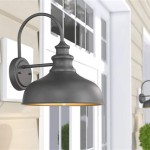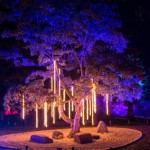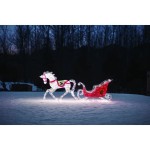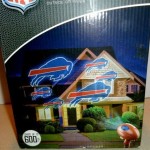Outdoor Dining Area Lighting Design Ideas
Outdoor dining areas offer a unique opportunity to extend living spaces and enjoy meals in the fresh air. Effective lighting plays a pivotal role in creating an inviting and functional atmosphere for these spaces. Thoughtful lighting design enhances the ambiance, improves safety, and allows for comfortable use of the dining area well into the evening. This article explores various outdoor dining area lighting design ideas, focusing on different styles, techniques, and considerations for creating a well-lit and aesthetically pleasing outdoor dining experience.
The planning phase of outdoor lighting design should include an assessment of the area's size, existing architectural features, and intended use. Consider the style and color palette of the surrounding environment to ensure that the lighting fixtures complement the overall aesthetic. It is also important to consider the amount of natural light that the area receives during the day, as this will influence the required intensity and type of artificial lighting needed. Safety and security should be primary concerns, ensuring that pathways and steps are adequately illuminated.
Understanding Layered Lighting Techniques
Layered lighting is a fundamental principle in effective outdoor lighting design. This involves combining different types of light sources to achieve a balanced and visually appealing result. Three primary layers of lighting are typically utilized: ambient, task, and accent lighting. Each layer serves a specific purpose and contributes to the overall functionality and ambiance of the outdoor dining area.
Ambient lighting provides the overall illumination for the space. It creates a general sense of brightness and helps define the area. Examples of ambient lighting in an outdoor dining setting include string lights strung overhead, post lights along the perimeter, or soft, diffused light emanating from nearby architectural features. The goal of ambient lighting is to provide a comfortable level of visibility without being too harsh or overwhelming.
Task lighting, as the name suggests, is designed to illuminate specific areas where tasks are performed, such as the dining table itself. This type of lighting needs to be bright enough to allow diners to see their food clearly and converse comfortably. Options for task lighting include pendant lights hanging directly above the table, directional spotlights aimed at the table, or even well-placed candles or lanterns for a more intimate and romantic setting. The key is to provide sufficient light without creating glare or shadows.
Accent lighting is used to highlight specific features or details in the outdoor dining area. This could include architectural elements, landscaping, or decorative objects. Accent lighting adds visual interest and depth to the space, creating a more dynamic and engaging environment. Examples of accent lighting include uplighting trees or shrubs, spotlighting a water feature, or using colored lights to highlight a particular sculpture. The use of accent lighting should be subtle and strategic, drawing attention to key areas without overwhelming the overall lighting scheme.
Exploring Different Types of Lighting Fixtures
The selection of appropriate lighting fixtures is crucial for achieving the desired aesthetic and functionality in an outdoor dining area. Numerous options are available, each with its own unique characteristics and benefits. Considerations should include the style of the fixture, its light output, energy efficiency, and weather resistance.
String lights are a popular and versatile option for creating a festive and inviting atmosphere. They can be strung overhead, wrapped around trees or posts, or draped along fences. String lights are available in various styles, including traditional incandescent bulbs, energy-efficient LED bulbs, and decorative shapes such as globes or lanterns. Consider using dimmable string lights to adjust the brightness and create a more intimate ambiance. Choose string lights that are specifically designed for outdoor use to ensure they are weather resistant and durable.
Pendant lights offer a more formal and sophisticated lighting solution for outdoor dining areas. They are typically suspended from a pergola, awning, or other overhead structure and provide direct illumination to the table below. Pendant lights are available in a wide range of styles, from classic lanterns to modern minimalist designs. Select fixtures that are appropriately sized for the table and the overall space. Ensure that the pendant lights are securely mounted and wired to prevent accidents.
Post lights are an excellent choice for illuminating pathways and defining the perimeter of the outdoor dining area. They provide both ambient lighting and safety, helping to prevent trips and falls. Post lights are available in various heights and styles, from traditional Victorian designs to sleek modern options. Consider using post lights with photocells that automatically turn on at dusk and off at dawn. Choose post lights that are made from durable materials that can withstand the elements.
Wall-mounted lights are a versatile option for illuminating walls and fences surrounding the outdoor dining area. They can provide both ambient and accent lighting, adding visual interest and enhancing the overall ambiance. Wall-mounted lights are available in various styles, including sconces, lanterns, and spotlights. Consider using wall-mounted lights with upward and downward facing beams to create a dramatic effect. Choose fixtures that are specifically designed for outdoor use and are resistant to moisture and corrosion.
Landscape lighting offers a subtle and elegant way to enhance the beauty of the surrounding garden and landscaping. Uplighting trees and shrubs can create a dramatic effect, while path lighting can guide guests safely through the garden. Consider using landscape lighting to highlight water features or sculptures. Choose fixtures that are discreet and blend seamlessly with the landscape. Use low-voltage lighting to minimize energy consumption and ensure safety.
Important Considerations for Outdoor Lighting Design
Beyond the selection of appropriate fixtures and lighting techniques, several other factors should be considered when designing an outdoor dining area lighting scheme. These include energy efficiency, safety, minimizing light pollution, and adhering to local regulations.
Energy efficiency is a crucial consideration in any lighting design project. LED bulbs are significantly more energy-efficient than traditional incandescent or halogen bulbs, consuming up to 80% less energy and lasting much longer. Consider using LED string lights, pendant lights, and landscape lighting fixtures. Look for products with the Energy Star label, which indicates that they meet stringent energy efficiency standards. Using a timer or photocell to automatically turn off lights when they are not needed can also help to reduce energy consumption.
Safety is paramount in outdoor lighting design. Ensure that all electrical connections are properly grounded and protected from the elements. Use weatherproof fixtures and wiring to prevent electrical shocks or fires. Adequately illuminate pathways and steps to prevent trips and falls. Consider using motion-sensor lights in areas where security is a concern. Regularly inspect and maintain the lighting system to ensure that it is functioning properly.
Minimizing light pollution is an increasingly important consideration in outdoor lighting design. Excessive or poorly directed lighting can disrupt wildlife, obscure the night sky, and annoy neighbors. Use shielded fixtures that direct light downwards, minimizing upward light spill. Avoid over-lighting the area and use only the amount of light that is necessary for safety and functionality. Consider using amber or red-toned lights, which are less disruptive to wildlife than blue or white lights. Be mindful of the impact of your lighting on the surrounding environment and take steps to minimize light pollution.
Local regulations may dictate specific requirements for outdoor lighting, such as restrictions on light levels, fixture types, or operating hours. Be sure to check with your local authorities before installing any outdoor lighting to ensure that you are in compliance with all applicable regulations. Some communities have ordinances designed to reduce light pollution or protect wildlife habitats. Failure to comply with local regulations can result in fines or other penalties.
In summary, creating a well-lit and inviting outdoor dining area requires careful planning and attention to detail. By understanding the principles of layered lighting, exploring different types of fixtures, and considering factors such as energy efficiency, safety, and light pollution, it is possible to design an outdoor dining space that is both functional and aesthetically pleasing, allowing for enjoyable evenings spent dining al fresco.

Setting Outdoor Lights For Patio Celebrations Balsam Hill

24 Backyard Lighting Ideas To Upgrade Your Patio

21 Best Outdoor Lighting Ideas Easy Patio

10 Best Outdoor Lighting Ideas Landscape Design Secrets

8 Outdoor Kitchen Lighting Ideas Angi

Glowing Gatherings 25 Covered Patio Lighting Concepts Lightopia

Creative Patio Lighting Ideas To Enhance Your Outdoor Space Triangle Gardener

22 Outdoor Lighting Ideas Lowe S

Outdoor Kitchen Design Lanchester Grill Hearth

Pergola Lighting Ideas







